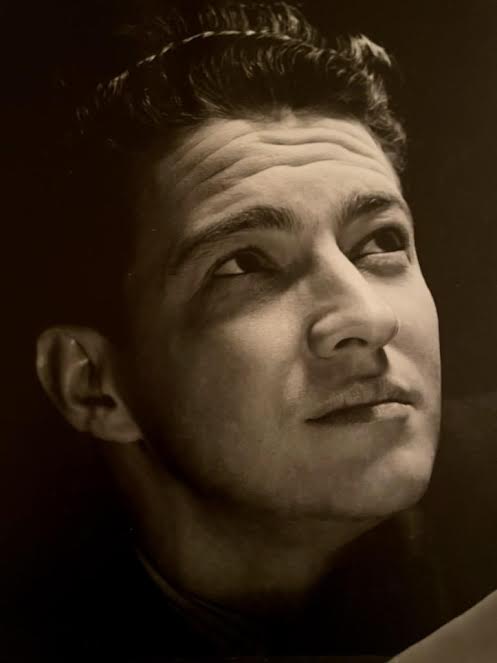John Hubley
 John Kirkham Hubley (May 21, 1914 – February 21, 1977) was an American animated film director, art director, producer, and writer, known for his work with the United Productions of America (UPA) and his own independent studio, Storyboard, Inc. (later renamed Hubley Studio). A pioneer and innovator in the American animation industry, Hubley pushed for more visually and emotionally complex films than the productions at that time of Walt Disney Company and Warner Brothers Animation. He and his second wife, Faith Hubley (née Chestman), worked side by side from 1953 onward, earning seven Academy Award nominations, of which they won three.
John Kirkham Hubley (May 21, 1914 – February 21, 1977) was an American animated film director, art director, producer, and writer, known for his work with the United Productions of America (UPA) and his own independent studio, Storyboard, Inc. (later renamed Hubley Studio). A pioneer and innovator in the American animation industry, Hubley pushed for more visually and emotionally complex films than the productions at that time of Walt Disney Company and Warner Brothers Animation. He and his second wife, Faith Hubley (née Chestman), worked side by side from 1953 onward, earning seven Academy Award nominations, of which they won three.Hubley was born in Marinette, Wisconsin, in 1914 and developed an interest in art from a young age, as both his mother and maternal grandfather were professional painters. After high school, he attended the ArtCenter College of Design, then in Los Angeles, to study painting. At age 22, after three years of classes, he landed a job at the Walt Disney Animation Studio. Although the studio recognized his talents and made him an animation director on ''Fantasia'', Hubley felt restricted by the conservative animation style. Hubley left Disney in 1941 during the Disney animator's strike and joined the First Motion Pictures Unit, later following many of his fellow unit artists to the newly formed Industrial Poster Service (later renamed the United Productions of America). Hubley served many roles at UPA and directed several Academy Award-nominated animated shorts. Most famously, he directed ''The Ragtime Bear'' (1949), the debut of Mr. Magoo, a character he co-created.
In 1952, Hubley was forced to leave UPA after refusing to denounce communism, leading to his eventual investigation by the House Un-American Activities Committee. He soon opened his own independent studio to capitalize on commercial work for the new market of television advertising, directing the successful "I Want My Maypo!" spot. In 1954, he was commissioned by the Solomon R. Guggenheim Museum to make an animated short film, the first short ever funded by an art museum.
Hubley, alongside his wife Faith, is often considered the most important figure in American independent animation and one of the most important in the history of animation. The couple's ''Moonbird'' (1959) became the first independent film to win the Academy Award for Best Animated Short. They collaborated with jazz musicians including Dizzy Gillespie, Benny Carter, and Quincy Jones and often used unscripted, improvised dialogue, creating an entirely new way of expressing emotion and feeling through the medium of animation. Their work is considered important in the evolution of post-war modernism in film. The Academy of Motion Pictures Arts and Sciences claim the Hubleys' films "bucked the establishment and defined an era of independent animation production". Provided by Wikipedia
Showing 1 - 15 results of 15 for search 'Hubley, John', query time: 0.06s
Refine Results
In addition to media from the THWS, media from other Bavarian libraries are also displayed.
These are marked with the "Interlibrary loan" label and can be ordered by clicking on them.
These are marked with the "Interlibrary loan" label and can be ordered by clicking on them.
-
1
A Doonesbury special a director's notebook by Trudeau, Garretson B. 1948-, Hubley, John, Hubley, Faith
Published 1978Call Number: Loading…
Located: Loading… -
2
Dig! A journey under the earth's crust by Hubley, John, Hubley, Faith
Published 1973Call Number: Loading…
Located: Loading… -
3
The AIDS handbook a guide to the prevention of AIDS and HIV by Hubley, John
Published 2002Call Number: Loading…
Located: Loading… -
4
Public health an action guide to improving health in developing countries by Walley, John, Wright, John, Hubley, John
Published 2001Call Number: Loading…
Located: Loading… -
5
-
6
-
7
The Hubley Collection - Volume 1
Published 1999Other Authors:Call Number: Loading…
Located: Loading… -
8
-
9
Voyage to Next
Published 1993Other Authors: “…Hubley, John…”
Call Number: Loading…
Located: Loading… -
10
-
11
Of Men and Demons
Published 1993Other Authors: “…Hubley, John…”
Call Number: Loading…
Located: Loading… -
12
-
13
The Hubley Collection - Volume 2
Published 1999Other Authors:Call Number: Loading…
Located: Loading… -
14
Mr. Magoo - Volume I
Published 1980Other Authors: “…Hubley, John…”
Call Number: Loading…
Located: Loading… -
15
The Columbia Pictures Cartoon Classics Eight Animation Gems by Poe, Edgar Allan
Published 1987Other Authors:Call Number: Loading…
Located: Loading…
